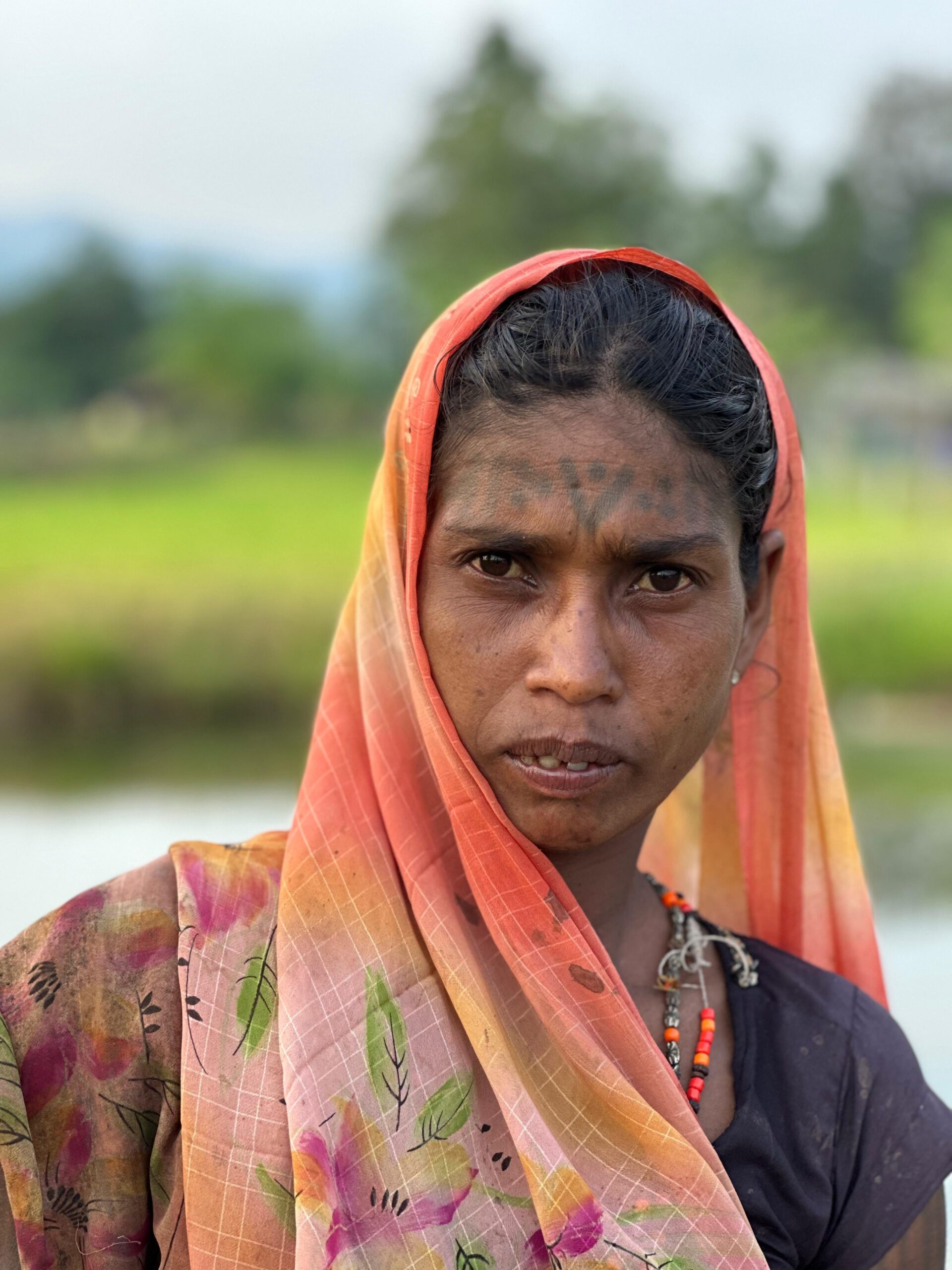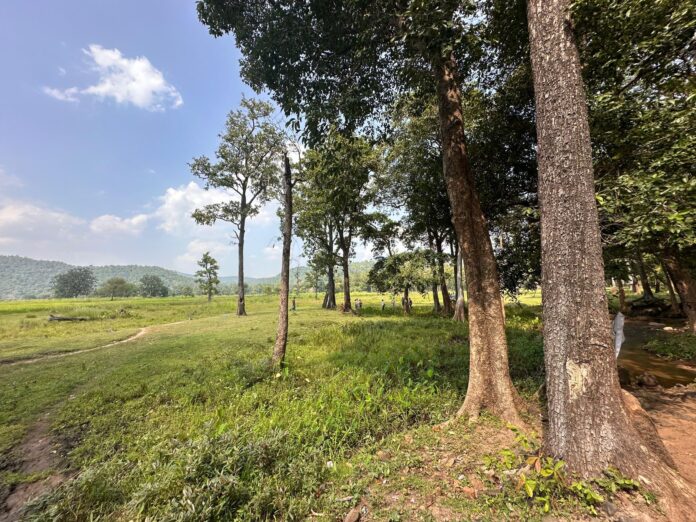Hamaad Habibullah & Anamika Yadav TwoCircles.net
Samarlin Agriya, a young Adivasi woman from the Baiga tribe, received her first tattoo at the age of 10. “I was scared of getting inked,” she recalled, describing her experience of having tattoos placed on her forehead, hands, back and other parts of her body. Despite her initial fear, she worries that the tradition of tattooing may soon disappear as younger generations show less interest in this cultural practice.
Godna, the traditional art form of full-body tattooing among the Baiga tribe, has long been a cornerstone of their cultural heritage. Characterized by intricate and symbolic designs, these tattoos are not merely decorative but carry deep cultural, historical and mythological significance. Passed down through centuries, Godna serves as a means of self-expression and identity for Baiga women.
The Baigas, a semi-nomadic ethnic group residing in the forested regions of Madhya Pradesh and Chhattisgarh, are recognized as one of India’s 75 Particularly Vulnerable Tribal Groups.

Paoni Patidar, a development practitioner with experience working with various Indian tribes, explains the significance of the art form: “Material possessions like jewelry or clothing don’t accompany us in death, but tattoos remain with us and are believed to be carried into the next life.”
However, the tradition of Godna is waning among younger Baiga women. Many are reluctant to endure the pain of getting these tattoos, questioning their relevance in a rapidly changing world.
Samarlin Agriya notes, “Young girls now ask, ‘What’s the purpose? Why do we need it?’”
Sakal Ram, a Baiga man in his mid-forties, laments the loss of this integral aspect of his tribe’s identity. “The young girls no longer want Godna. They say it doesn’t look good. If this trend continues, the Baiga identity and pride may vanish,” he warns.
The shift in attitude towards Godna is largely attributed to increasing assimilation with the outside world. Dileshwari, a young Baiga mother with extensive tattoos, observes, “The significance of Godna has diminished. Exposure to external influences has altered preferences in clothing and accessories.”

Ram Phool, another Baiga woman, echoes this sentiment, stating, “The younger generation is influenced by urban culture. Their clothing and jewelry have changed, and there is little left of traditional Baiga customs.”
Modern beauty standards and interactions with broader society have also impacted young Baiga women’s perceptions of Godna.
Rajmati, an older Baiga woman adorned with tattoos, explains, “The young girls believe Godna doesn’t look good anymore. It’s a traditional practice, but they’re not interested.”
Additionally, the visible tattoos often lead to discrimination outside their community. Chari Bai Lohar, a Baiga woman, points out that school-going girls face peer pressure and ridicule for their tattoos, which creates a reluctance to continue the tradition.
Young Baiga girls attending schools outside their tribe feel uncomfortable and different due to their tattoos, which exacerbates their desire to conform to modern standards and blend in with their peers.
Historically, Baiga girls began receiving tattoos around the age of 10-12, starting with their heads and hands, and continuing with their backs after marriage.
Biresiya, a Baiga woman with Godna, explains, “In the past, girls who didn’t have Godna weren’t considered true Baigas and were often not accepted for marriage. Girls today, however, seem to reject this practice.”
Commenting on the decline of Godna among young Baiga women, an observer noted, “Each tribal community’s identity is expressed through the designs of Godna, but the influence of urban society has led to a devaluation of these practices, making individuals feel inferior about their own traditions.”
Jemreen, a young Baiga girl who has not yet undergone Godna, sums up the current sentiment: “It hurts, and I don’t like it. I’m scared of it.”
The fading tradition of Godna reflects the broader challenges faced by indigenous cultures in preserving their heritage amidst rapid modernization and changing societal norms.


